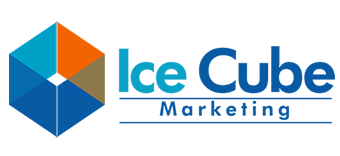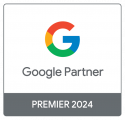Welcome to our guide that’s anything but the run-of-the-mill. If you’re tired of hearing that “Instagram is for the young” or that “TikTok is all about video,” you’re in for a treat. Unlike typical digital marketing guides that echo these sentiments, ours draws from 8 years of hands-on experience executing digital marketing campaigns that drive sales. Aimed at Small and Medium Enterprises (SMEs), this guide focuses not on brand awareness or viral posts, but on sales-driven marketing. By the end, you’ll also get a sneak peek into our favorite tactics.
To put our expertise into context, we allocate S$5 million annually to Facebook and Google ads. The result? A plethora of campaigns that have seen conversions, from lead generation and workshop sign-ups to direct e-commerce purchases.
3Ms of digital marketing
While traditional marketing swears by the 5Ps – Product, Price, Promotion, Place, and People – the digital landscape can be understood through the 3Ms: Medium, Message, and Mechanism.
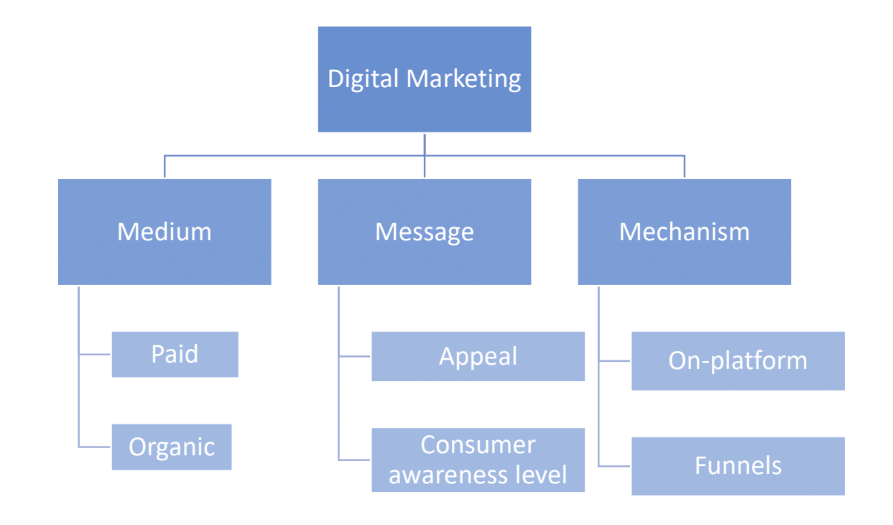
1. Medium
Mediums (or channels) determine how you reach your target audience. Broadly, mediums fall into two categories:
Paid Mediums: Think of online platforms like Facebook and Google (which also encompass Instagram, WhatsApp, YouTube) as landlords. Just as you’d rent prime retail space in a bustling mall in Orchard road to attract walk-ins, you “rent” ad space from these platforms to draw online traffic. The comparison isn’t limited to footfalls. Just as premium offline spaces demand steeper rents, more online traffic translates into higher ad costs. Considering the growing emphasis on online engagements, especially with the pandemic and the rise of remote work, the value of online traffic parallels that of its offline counterpart. And yes, just as you wouldn’t mind renting a spot in a popular mall, paying for online clicks shouldn’t daunt you.
From a channel perspective, you can stick to the big 2: Google and Facebook.
“How about Twitter, Wechat, Snapchat, Yahoo, Vine, Quora and xyz and abc that are highly popular in other countries?” you might ask.
We advise businesses to stick with Google & Facebook for these reasons:
Number of users: Google and Facebook each has more than 4million users in Singapore(practically whole of Singapore) which makes it suitable for any business in Singapore.
Mature ads platform: When Facebook Ads started in 2009, the ads technology is pathetic. However, over the years, its machine learning and targeting capabilities have gotten much more sophisticated. This means increasingly better ROI for businesses. Other platforms may have users in Singapore but their ads platform still leaves much to be desired. Google is the old guard and needs no introduction.
Scalable: Sure you do not need so many customers to make a profit from ads, but Google and Facebook allows you to scale your advertising campaign when you want to. There is a compound effect. The more you advertise on Facebook, the more it learns about your target audience and improves on its targeting precision.
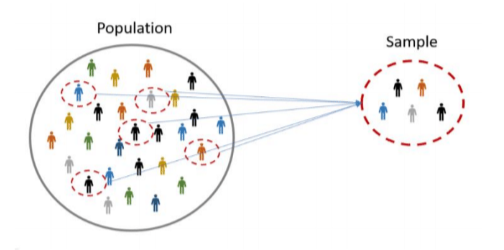
Reliability: Other platforms may give you a trickle of a few customers but they quickly dry out. Facebook & Google are able to give a consistent stream of customers each month based on your ad budget–basically, what SMEs in Singapore need the most.
The common argument here is that Google and Facebook are already fraught with advertisers and have gotten too competitive.(see our point on digital marketing in Singapore for ads saturation).
Our advice applies to the average advertiser in Singapore. Unless you are spending close to 6 figures a month on online ads, you probably have not reached your cap on Google & Facebook. Before you reach your cap, you will be fine sticking to Google and Facebook.
Organic Mediums: While ‘organic’ suggests unpaid, these platforms aren’t entirely free. Crafting content for Google SEO or YouTube requires time and effort. Remember the days when a Facebook page would connect you to a vast audience segment? Those days are dwindling. However, since these listings are essentially free, there’s no harm in maximizing your online presence through platforms like Google My Business, Tech in Asia, e27, and others. Innovative organic mediums also come into play here, like affiliate and referral marketing.
Take, for instance, Secretlab’s ingenious tactic. They extend the warranty on their chairs by two years when customers share an image of their purchase online. It’s a win-win: customers don’t pay extra, and Secretlab enjoys free promotion. Dropbox’s offer of additional free space to those who refer their friends is another classic example.
For businesses exploring referral marketing, plugins like Referral Candy can handle the technical bits.
2. Mechanism
At its core, a mechanism is your strategy or your “funnel”. It’s the path you guide potential customers down to hopefully turn them into paying customers. There are many mechanisms out there, but let’s touch on some popular ones.
On-platform Mechanisms
Facebook and Google provides conversion mechanisms for you to use without having to build your own websites. Here are some examples:
Messenger Bots: You’ve probably seen ads that, when clicked, direct you to Facebook or WhatsApp Messenger. Here, businesses can use chatbots to automate conversations. Tools like ManyChat are great for this. However, a word of caution: chatbots can sometimes be too generic, which might turn some people away. Personally, we prefer the direct touch – a phone call.
Lead Forms on Facebook: This is quite straightforward. Click on an ad, and a pre-filled form with your details pops up. Handy, right?
Medium vs Mechanism
Before we delve further into mechanisms, let’s clarify the difference between your medium (how you reach your audience) and your mechanism. Whether you’re using paid ads or organic posts, they can both lead to the same mechanism. For instance, you can guide organic visitors from a Google search straight to your chatbot.
Now, here’s a common misconception: some think SEO (Search Engine Optimization) is a strategy. But it’s just a medium—a way to get traffic. Without a clear mechanism in place, even fantastic SEO won’t get you the results you want.

The World of Funnels
Funnels are a subcategory of mechanisms, and they come in many flavors:
Webinar Funnel: Click on an ad, sign up for a webinar, get reminder emails, attend the webinar, and finally, make a purchase.
Ebook Funnel: Have tons of content? Guide users through valuable content and then lead them to a product or service.
020 Funnel: Our personal favorite! It starts with a detailed landing page that pre-sells the product. From there, we warm up the lead, get them ready for an appointment, and close the deal in person.
Funnels: Online vs offline
If you follow any of the top US marketers such as Russell Brunson or Ramit Sethi, you know that a lot of them are proponents of sales funnels that are 100% online and even automated. They tend to run ads that send traffic to a webinar or an automated email sequence which nurtures and ultimately converts the prospects, collecting payment online.
However, in Singapore, consumer expectations are slightly different. Perhaps due in part to the size and density of the city, we expect to meet people face to face before making the buying decision. (I’m talking about relatively bigger ticket items of 1k and above, or possibly $500.)
An O2O(Online to offline) approach is needed. Here’s how it works. As per the proven internet marketing strategy, you still run an online campaign, buy ads and send them to a landing page but the call-to-action offer will be in the offline context. For example, you can get people to sign up for a free consultation, a free trial, a free diagnostic assessment, a free site survey, free strategy session, free workshop, free masterclass. You want to ascribe a specific value to your offer so that it compels people to come down, rather than position it as a sales trap.
Offer
No matter the funnel type, the heart of it is the “call-to-action”. It might be a free trial, a paid trial, or even a consultation. Our suggestion? Offer something low-risk, like a free trial. Let people experience what you have to offer without much commitment.
Breaking a Myth
There’s this idea floating around that you need a top-tier website to kickstart any digital marketing campaign. But that’s not true. If you break down our 3M model, you’ll see that the mechanism (how you capture leads) doesn’t always need a website. It could be a messenger bot, a lead form, or a landing page.
A flashy website might be nice, but it doesn’t guarantee digital marketing success. That’s why it’s crucial to understand the 3M model. Otherwise, you might just be throwing your money away.
3. Message
The third cornerstone of digital marketing is “Messaging.” Often overlooked, yet in our view, it holds the most potential. While many are drawn to the allure of the medium and mechanism due to their tech-savvy nature, messaging demands careful attention and groundwork. As a result, many ads resort to straightforward promotional tactics, like those brief ads we frequently see on our newsfeeds that directly pitch a product or loudly announce a 20% discount. These often come across as bland and unengaging. Given the lively nature of social media, it’s imperative to craft our messages thoughtfully to capture genuine attention.
Three Aspects of Messaging
Awareness Level: Before crafting a message, assess where your audience stands in terms of awareness. Are they problem aware, or are they solution aware? Consider my personal experience: My laptop was slow, making me problem aware. However, I wasn’t solution aware until a salesperson suggested I upgrade my RAM. The lesson? Ensure your ad messaging aligns with your audience’s level of awareness.
Appeal: What drives your message? Logic or emotion? The ’emotions wheel’ is an excellent tool to understand the diverse range of human emotions. While happiness and sadness are the usual go-tos, leveraging emotions like fear or envy can often yield better results. Ads tapping into negative emotions can sometimes outperform their positive counterparts, mainly because we humans are inherently averse to losses. This concept was even validated by economist Daniel Kahneman, who bagged a Nobel for proving it. And always remember: we’re marketing to humans, not machines.
Benefit: Zero in on the primary benefit you want to highlight in yo ur ad. For instance, iPhone ads expertly showcase one major feature at a time, be it shock- resistance, waterproofing, or privacy. Why? Good marketers understand the ‘Rule of 1’. A message loses its impact when it’s cluttered. Keep it focused on a central benefit.
“Cowboy” advertising
Some marketers think that the internet has no boundaries & rulings and they are free to post anything they want. Well, Singapore is one of the first few countries to introduce a law to fight fake news by restricting the content published on social media and on the internet. This comes after news reports of sightings of articles using fake stories to promote digital currency trading.

What this means is that the Singapore government and its people have a very low tolerance for deceptive marketing practices.
When running digital campaigns in Singapore, advertisers also have to take into consideration advertising guidelines specific to highly- regulated industries such as in healthcare. For example, words like‘best,’ ‘discounts,’ ‘Singapore’s No.1’ are not allowed under the Private Hospitals and Medical Clinics Act.
The takeaway here goes further than just obeying the law. In fact, being honest in your ads is just good marketing. Advertising legend, David Ogilvy has this to say, “The consumer is not a moron, she’s your wife! Don’t insult her intelligence. You wouldn’t lie to your wife, don’t lie to mine.”
Considering that Singaporeans are a highly educated and savvy bunch, it pays to be transparent and authentic in your ads. Now, who says you can’t add impact to your ads with strong copywriting techniques while staying with the facts?
Doing Digital marketing in Singapore
Cost of advertising
Sure, Google and Facebook advertising costs have risen over the years, but in Singapore, it is nowhere near its peak. Just look at the stats for the USA; the most expensive keywords go for as high as US$47 per click. The same keywords cost anywhere between $2 to $17 per click in Singapore.
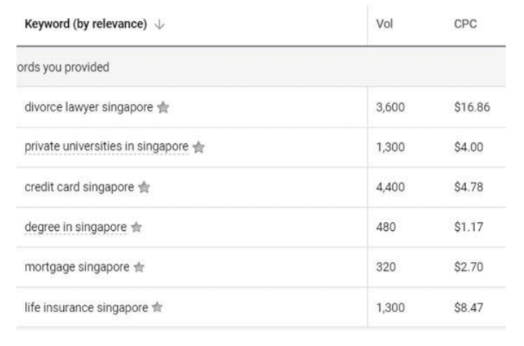
In many other countries, the cost of advertising is way higher than in Singapore(even though Singapore has one of the highest costs of living in the world). In terms of Advertising costs, Singapore is only at probably the 50 percentile(by estimate).
Unsurprisingly, SMEs in USA also spend way more than SMEs in Singapore on online ads. Data from Wordstream showed that the average spend is $9k-10k/month for an SME in the USA. On the other hand, from our experience, SMEs in Singapore prefer to spend anywhere from $500 to $4k/month. A survey by Equinet Academy indicates that 31% of businesses allocate less than $1k/month for marketing. This is likely due to the unfamiliarity of local businesses with social media and digital marketing in Singapore, preferring to tread on safer waters.
Given that Singapore has one of the highest social media penetration rate of 93% in the world, opportunities abound for SMEs to dominate their marketplace online. Interested to learn more about advertising costs? Check our article on Facebook ad costs.
Facebook Targeting
You’ve probably heard about Facebook’s ability to go laser targeted on your ideal prospects based on a large amount of data it has collected of its users. Unlike in the US (in which Facebook has access to more data), however, a number of targeting options are not available to us in Singapore, for example, income level, home type, b2b buyers, and certain purchase behaviors are not available.
Guess what; this is only part 1 of the story.
The real potential around Facebook targeting lies in its use of machine learning. It basically takes over our job as advertisers and decides who to target for us. The longer you run your campaign and accumulate more data, the more accurate it becomes. Facebook ads is built for bigger countries like USA with hundred of millions in population, so when it comes to Singapore, imagine how much easier and faster it is for Facebook to find your ideal prospects.
Time and again, it has been shown. No matter what audiences you choose in your targeting settings, there is bound to be overlaps in the audience being targeted as Facebook takes over the driver’s seat in finding you the perfect audience. For example, if you are an interior designer and you are targeting people who are interested in interior design as well as people who are fans of Renovation portals such as Renotalk, Renonation, Qanvast, Facebook will almost show your ads to the same group of people most likely to click on your ad.
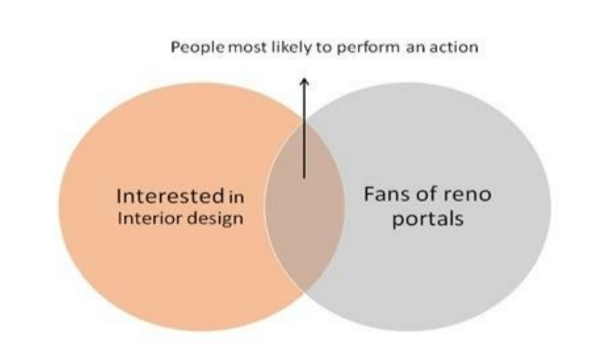
The whole point of this barrage is to tell you that you should focus your effort on crafting the best ad message instead. It will make targeting a whole lot easier; Surprise, surprise. By using ad copies that attract your target audiences to engage with or click on, Facebook develops an idea of your best prospects and show your ads to more of the same type. This way, your ad actually does the “targeting” for you! Put simply, Ads ideation trumps audience targeting, particularly in Singapore.
Kiasu-ism
From Hello Kitties to Iphones to hawker fare, it is no secret that Singaporeans are willing to queue for hours(and even days) to get our hands on desirable products. A queue begets an even longer queue because of the power of social proof. You can create social proof online too; using testimonials, media features, user stats, and other methods. It doesn’t hurt to throw in some ‘scarcity’ to amp up the desirability of your product. Scarcity can take the form of a time-
limited offer or exclusive coupons.
Bring your marketing to the next level
At the end of the day, “marketing” should not be detached from “digital marketing.” Marketing entails going back to basics and gaining a real understanding of the target audience. Digital is but a channel. This article provides you with general insights into the Singapore market, but in order to win in your marketplace, you have to get more specific and dive deeper. If you need any help in your digital marketing, don’t forget to check out our agency services and get your free consultation.
